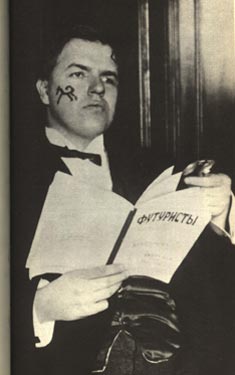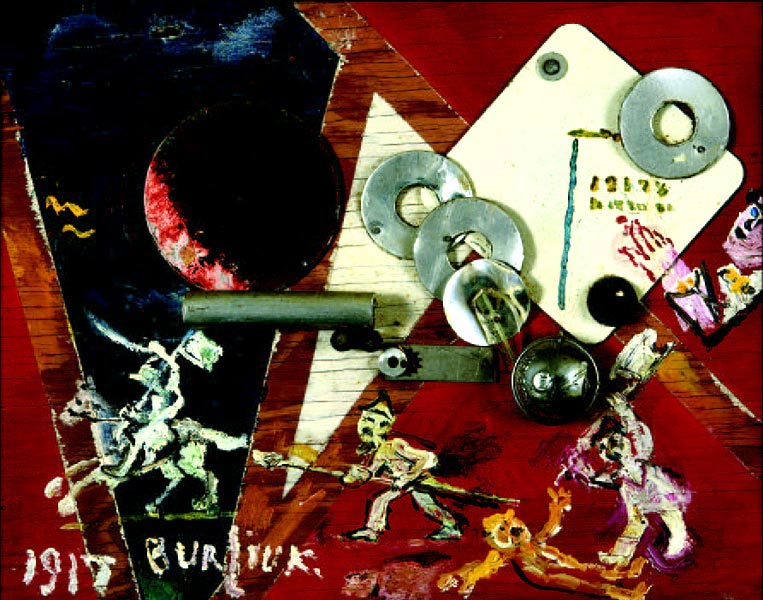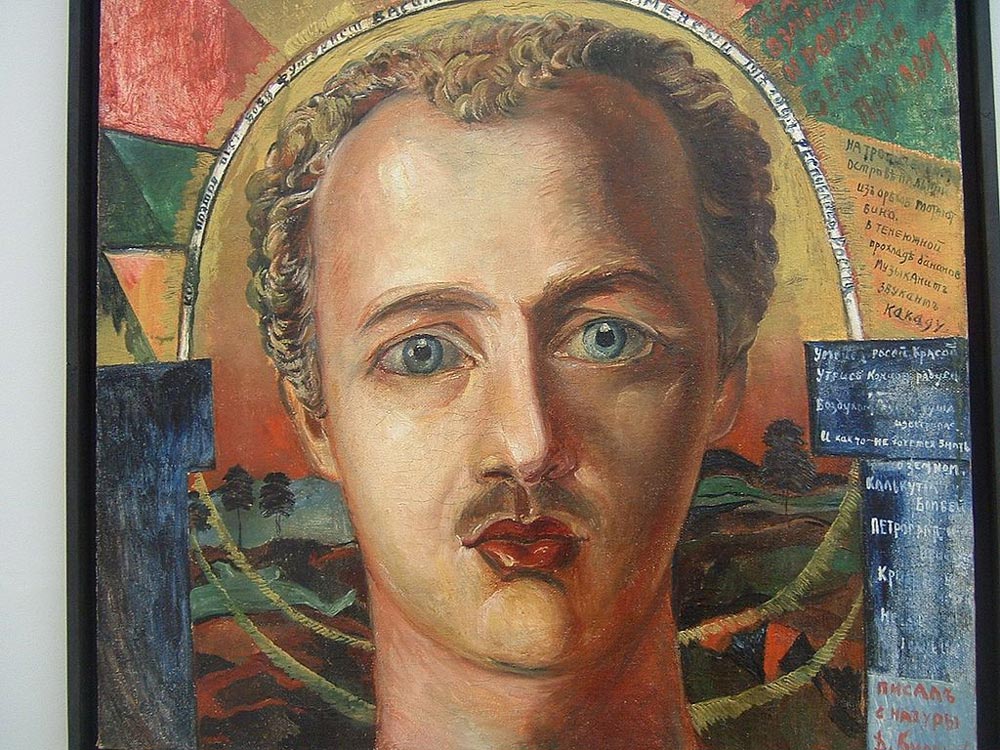| David Burliuk | |
|---|---|
 |
|
| Born | July 21, 1882 |
| Died | January 15, 1967 |
| Nationality | Ukrainian |
| Movement | Russian Futurism, Neo-Primitivism |
| Field | Book illustrator, publicist, and author |
| Works | View Complete Works |
David Burliuk (1882-1967) was a Ukrainian painter who was a member of the Russian Futurist school. Indeed, because of his pioneering work in this field, he is sometimes known as the “Father of Russian Futurism.” As well as producing his paintings, Burliuk was an accomplished illustrator of books as well as being a publicist with some reputation.
Personal Life
Burliuk was born in the small settlement of Semyrotivka, close to the village of Riabushky. His family ancestry contained Cossacks who had held high office in the Hetmanate State of two centuries earlier. His brother, Volodymyr, also became an artist, although not one of comparable renown. His mother, however, came from a Belarussian family. David himself was sent to Kazan’s art school in 1898, following his studies there with a period at the larger school in Odessa, and finally at Munich’s prestigious Royal Academy.
He married his wife, Marussia, only after having employed her as his model on a number of occasions. He was dismissed from the academy in 1913, and after the Russian Revolution in 1917, he found himself becoming increasingly dissatisfied with the new Soviet regime. In 1922, he emigrated to the United States, gaining U.S. citizenship eight years later. Burliuk was initially denied permission to visit family in the USSR, but the Soviet government relented in later years, allowing him to make two short trips.
Significant Works
 Among Burliuk’s most famous paintings is the 1942 watercolor Lovers at Santa Monica Pier, set on the edge of what was soon to become the huge conurbation of Los Angeles. Here Burliuk depicts a sailor and his sweetheart, observed by a top-hatted figure that is commonly assumed to represent the artist himself. Particularly striking in this work is the sky, with red, yellow, and purple combining to create a stunning sunset. Despite this show from Mother Nature, however, the adoring couple is interested only in each other.
Among Burliuk’s most famous paintings is the 1942 watercolor Lovers at Santa Monica Pier, set on the edge of what was soon to become the huge conurbation of Los Angeles. Here Burliuk depicts a sailor and his sweetheart, observed by a top-hatted figure that is commonly assumed to represent the artist himself. Particularly striking in this work is the sky, with red, yellow, and purple combining to create a stunning sunset. Despite this show from Mother Nature, however, the adoring couple is interested only in each other.
Another notable piece, very different in tone but retaining Burliuk’s love of color and form is the 1958 painting Still Life by a Window. Here, a vase of vibrant flowers blooms on a window sill, mostly obscuring the pictures hanging on the wall behind. A single leaf rests on the window sill, drawing the viewer’s eye to the utter contrast outside, where the trees are bare and winter holds sway. This work was sold at auction in 2011 for $30,000, demonstrating the enduring fascination with Burliuk’s art.
Artistic Style and Techniques
 Burliuk’s exuberant style was noted at a young age: his teacher in the Munich academy, Anton Azhbe, referred to his character as “wonderful” and “wild.” Although his style did evolve as he grew older, he always maintained a liking for bold, vivid colors and strong, forceful texturing in his works. Many of these concentrated on depicting the pleasures of a relatively simple, almost pre-industrial world. This contrasted with his avant-garde, futuristic style to create a startling clash of cultures.
Burliuk’s exuberant style was noted at a young age: his teacher in the Munich academy, Anton Azhbe, referred to his character as “wonderful” and “wild.” Although his style did evolve as he grew older, he always maintained a liking for bold, vivid colors and strong, forceful texturing in his works. Many of these concentrated on depicting the pleasures of a relatively simple, almost pre-industrial world. This contrasted with his avant-garde, futuristic style to create a startling clash of cultures.
Although Burliuk was skilled in a wide range of styles and artistic forms, he often favored a straightforward approach that included painting directly from his tubes, rather than employing a palette on which he could mix his paints. As well as this style, which was used for strong impasto pieces, Burliuk also created more subtle portraits as well as scenes showing the human form placed within a larger, often simply rustic, landscape.